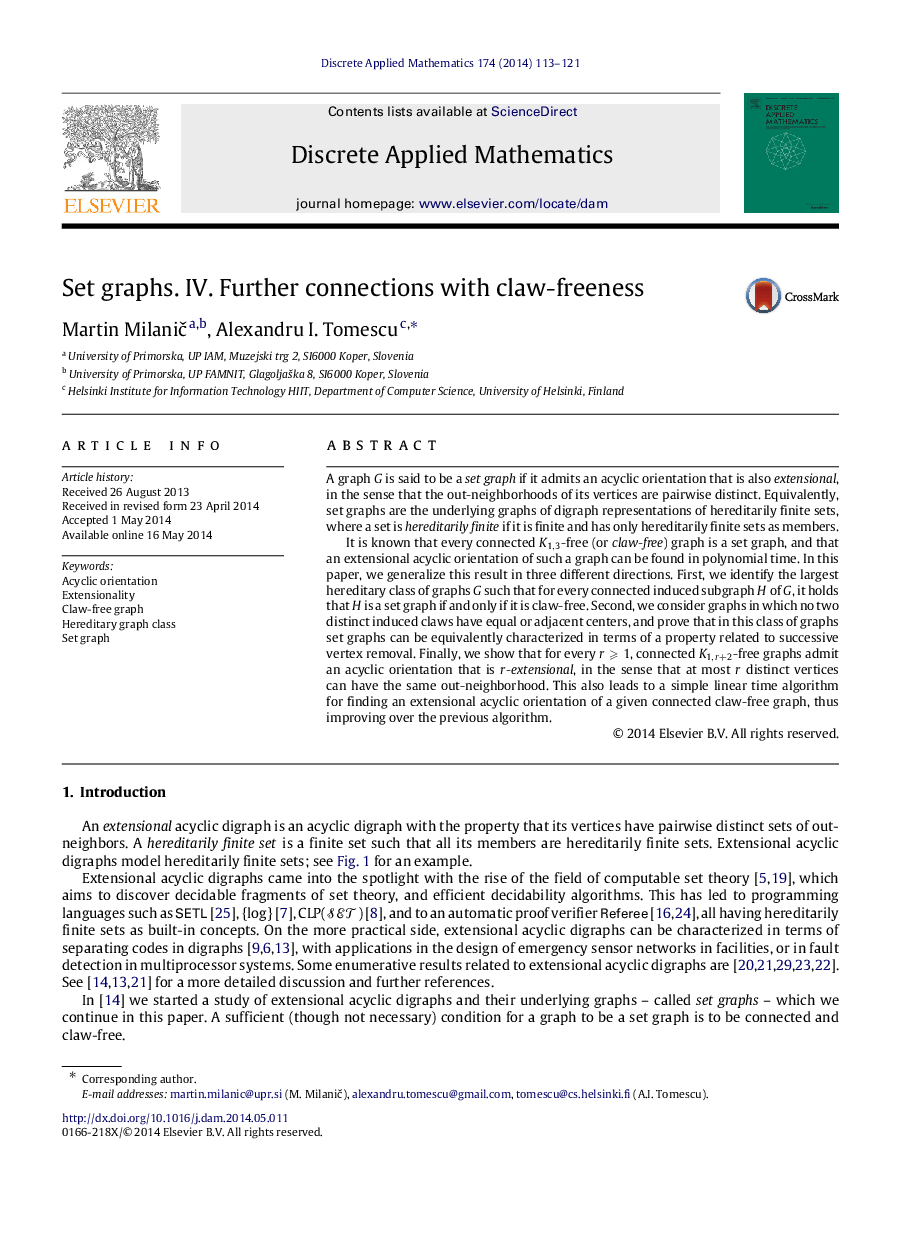| Article ID | Journal | Published Year | Pages | File Type |
|---|---|---|---|---|
| 421164 | Discrete Applied Mathematics | 2014 | 9 Pages |
A graph GG is said to be a set graph if it admits an acyclic orientation that is also extensional, in the sense that the out-neighborhoods of its vertices are pairwise distinct. Equivalently, set graphs are the underlying graphs of digraph representations of hereditarily finite sets, where a set is hereditarily finite if it is finite and has only hereditarily finite sets as members.It is known that every connected K1,3K1,3-free (or claw-free ) graph is a set graph, and that an extensional acyclic orientation of such a graph can be found in polynomial time. In this paper, we generalize this result in three different directions. First, we identify the largest hereditary class of graphs GG such that for every connected induced subgraph HH of GG, it holds that HH is a set graph if and only if it is claw-free. Second, we consider graphs in which no two distinct induced claws have equal or adjacent centers, and prove that in this class of graphs set graphs can be equivalently characterized in terms of a property related to successive vertex removal. Finally, we show that for every r⩾1r⩾1, connected K1,r+2K1,r+2-free graphs admit an acyclic orientation that is rr-extensional , in the sense that at most rr distinct vertices can have the same out-neighborhood. This also leads to a simple linear time algorithm for finding an extensional acyclic orientation of a given connected claw-free graph, thus improving over the previous algorithm.
